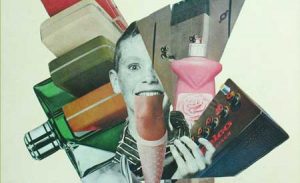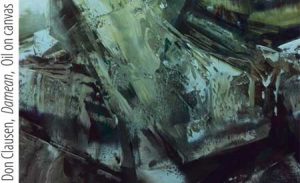What is the sociological criterion to be one among those who are strangers to the established artistic circles yet produce spontaneously inventive works of art? Sometimes it may mean nothing, yet other times it may be a two-fold statement which may support an abundance of ambiguous creativity.
Who are the creators whose works mean to the contemporary world a sort of “artistic independence?” Their works are testimonies of another kind of everyday life where both dreams and introspection give shape and context to a series of usefully dramatic elements which are strange or not yet essentially admissible in art schools, commercial circuits, and institutions.

Indifferent to the contact with potential spectators, they do not worry about the future of their work. And more often than usual it happens that some of them are discovered only after their death.
In art brut the notion of the unconscious is transformed in a case of denuding the psyche, re-signifying the language, through savage contemplation. That is a contemplation with is roots of reference to the primitive societies, brought upside down. It is constantly questioning the legitimacy of our questioning by exploring the principles that govern the allotment of reality.
Art brut was and remains thus a globalized concept. As it reveals the universally acknowledged distinctions, it paradoxically ends up creating a new division, or a new point of interest, a new tipping point in the art field. By accomplishing this, it expresses an irruptive disclosure, severity, and fascination, radiating from the inspiration of such artists. From the point of view of the author, it accounts for the proximity of the work with the original psychic materials that, under other circumstances, would remain hidden under the banality or eccentricity of the ordinary life.

Francis Palanc (1928-2015), was born in Vence, France, and he was a baker and a confectioner, totally unknown and disregarded, who practiced what is sometimes poorly described today as “outsider art.” Palanc’s implements were a sieve, a strainer, a piping bag, a rolling pin and a big spatula. As for the ingredients: lac, gum arabic, dried egg white, boiled sugar, crushed eggshells, caramel, glaze, even sawdust.
Unfortunately, the facts about him are precious few, so that one is obliged to transcribe them whenever a good chance appears to write a few words about him and his peculiar, totally individual artistic dimension.

Almost nearly sixteen years old, Francis Palanc, as he finished his schooling, was required to join the family business and to be initiated into the trade. Around his 19th year, Palanc invented a system of alphabets made up of angular graphics, since Palanc was constantly preoccupied with his attempts to obtain “auto-geometrical” revelations on the origin and the essence of things.
Palanc highlighted the mystical, yet potential, influence of geometry in the mental life of each individual. His images invited the spectator to deepen his/her awareness into his fleeting rules by means of aesthetic gymnastic exercises, which lead the spirit to adopt the strangeness and the archetypal multi-meaning of his patterns; the power of painting and alphabetical geometry consequently, affects the entire consciousness, develop it and eventually fuels it. Autogeometry: an individualism of geometric attitudes. Personal rarity. The geometrization of oneself; man establishes into the metaphysics of forms, geometry, and language.

Palanc used to work secretively. In 1959 he approached an art dealer for the first time and this was the last one. A year later all his paintings and his archive were destroyed. Afterwards, Palanc ceased his artistic activity.
Palanc’s art was identified as “brut” according to Jean Dubuffet’s assertions on the “appeal to the primary human depths.” Art brut continues to question our aesthetic perceptions and the certitude (curriculum) of our definitions and our convictions concerning art and identity.

Already a long time before him, the “art of the insane (brut)” had triggered the interest of some enlightened psychiatrists and a small sum of intuitive intellectuals.
In Palanc’s work, one stands before a thrashed cosmos of a questioning textuality. His writing code and alphabet reveal the artist’s intention to signify a discourse between concepts of total autonomy and idiolect forms, which attempt to push the borders of the idealistic substance even further; that is not to intermix writing with images, but to offer a double analysis of potential meaning and a fresh examination of the possibility of an inspirational tolerance towards the absolution of human abstraction. Forms and symbolism brake only to manifest the repetitional determinism of human awareness in total.

“You do not trace anything, only what you live traces yourself to the extent that what you live is unknown to everyone, even to you.” — Francis Palanc
In short, Palanc’s works of “Autogéométrie”, are actually a kind of sacred geometric gymnastics which disciplines steer towards a psychophysical treatment. A meeting with our ancestral future.




